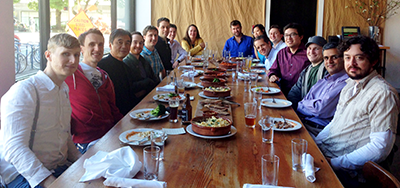Meridian Goes to Aruba: Why Wifi Networks are the Future of Location-Based Mobile
First thing’s first: I’m more than a little excited to announce that our plucky startup Meridian has a new home.

You may not have heard of Aruba Networks, but there’s a good chance you’re connected to one of their wireless access points right now. Their customers include the Facebook campus, Venetian resort and H&M retail, and they’re currently #2 in market share (after the behemoth Cisco).
So Meridian is a mobile software company, and Aruba is a wireless hardware manufacturer. How do we fit together?

Well for one thing, we have the same customers. Meridian helps enterprise locations like hospitals, stadiums, and retail stores create great mobile apps for their visitors. And Aruba helps these same locations provide their visitors with great Wifi connectivity.
But there’s more to it than that. We believe that intelligent wireless networks are the key to building awesome location-based mobile apps. Here’s why.
Building, meet Smartphone
Our inspiration for Meridian came from an iPhone app we built for the American Museum of Natural History.
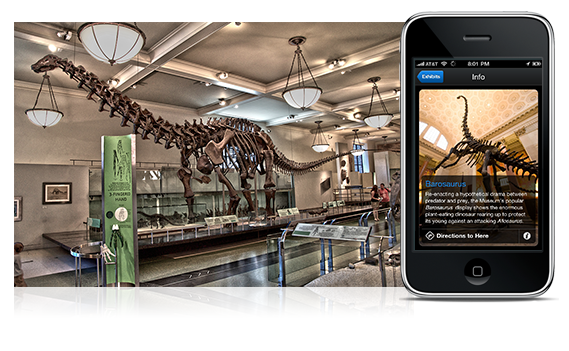
The (real!) story behind this app is as follows: One day, while visiting this labyrinthian, 150 year old, 500,000 square foot history museum, Mayor Bloomberg gets lost while trying to find the indoor parking structure containing his car.
With a flash of inspiration, he decrees: “I shall fix this problem…with technology!”
So Mayor Bloomberg creates a substantial grant for the museum on the condition that they invent a new state-of-the-art wayfinding system for visitors.
Enter our firm, Spotlight Mobile. We had been building mobile apps with navigational features for years, so we were brought in by Accenture to help solve the problem.
The timing couldn’t have been better, because Apple had just announced the iPhone SDK. This meant that, for the first time, we could build an app visitors could run on their own smartphones, instead of requiring the museum to hand out clunky PDAs like this:
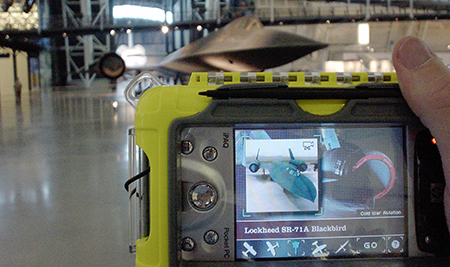
(I told you we’ve been doing this for years)
Getting Location Indoors
We built a comprehensive app with all kinds of fun features. You can learn about exhibits, you can take a curated tour or build your own, and of course you can get turn-by-turn directions to the parking garage from anywhere in the museum.
Those were no small tasks, but the biggest challenge remained: how do we figure out the visitor’s location indoors, where GPS doesn’t work at all?
Over the years we’ve built many systems for determining indoor location. We’ve used bluetooth and infrared beacons. We’ve poked at the camera and the microphone and the accelerometer. But the best, most reliable solution we’ve found is Wifi.
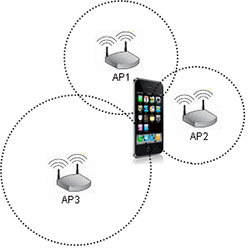
The basic idea is, instead of using cell towers or GPS satellites, you use wireless access points. And so we had a bunch of software to scan the area for nearby Wifi access points and calculate a location for your phone, just like GPS.
I say had because we threw it all away for the iPhone. You see, the iPhone SDK doesn’t permit developers to do these “signal scans.” Probably because it kills your battery life if you perform the amount of scans necessary to calculate your position often enough.
Ask the Network!
So, we flipped the problem on its head. Your smartphone is already generating Wifi traffic just by being connected to the network. Why not make the network do the job of analyzing your Wifi signal and calculating your position for you?
And that’s exactly how our system works. You simply connect to the museum’s Wifi network, which they opened up to the public for this purpose (which was a huge deal), and when you want to find your location, our app asks the network to figure it out and send it back.
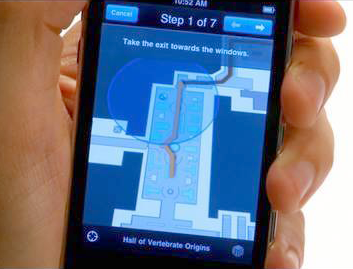
We implemented this approach on the museum’s Wifi network and it worked wonderfully. It’s truly a magical experience to ask the app where the T-Rex is and get guided there, through hallways and around corners and up stairs and elevators. Hundreds of thousands of visitors have now used our AMNH Explorer app to navigate the history museum.
Meridian ♥ Wifi Networks
This “Smart Wifi” approach was so successful that we started Meridian in order to bring it to more places. We built our Secure Location Engine to handle processing locations for many thousands of sites. And we created a really user-friendly CMS that our customers use to create their maps and location-based data.

Since we launched in March 2011, locations have used Meridian’s software platform to builds apps that let you find exhibits at the Art Institute of Chicago, poker tables at the Bellagio, and menswear at Macy’s.
What we found was that we often partnered with wireless network providers when approaching new locations with our software platform. In order to use our indoor location system, locations usually need to install or upgrade their Wifi network. And often this results in the location opening the network up for visitors, which is a win-win for everyone.
So we think it makes perfect sense to join a forward-thinking company like Aruba who really gets mobile and wants to expand the definition of what it means to have a Wifi network.

The Future of Location-Based Services
We think that indoor spaces are the next frontier of mobile, and the wireless network is the key to bridging the gap. We think of Wifi as a digital overlay on top of the real world, a fabric that you can speak with through your device to get the information you want.
Imagine walking into the hospital and having your phone alert you about your upcoming appointment and how to get to Radiology. Or landing at the airport for a layover and automatically getting the best route to your next gate. Or walking into a grocery store and getting guided through your shopping list in the most efficient order.
We’ve heard from so many places who want to deliver these features by building amazing apps and providing a great Wifi experience. We’re ready to help them do it, and we can’t wait to build the future together.
